Labor Market Resources.
Access current and past PDF publications compiled by the Economic and Workforce Development Center.
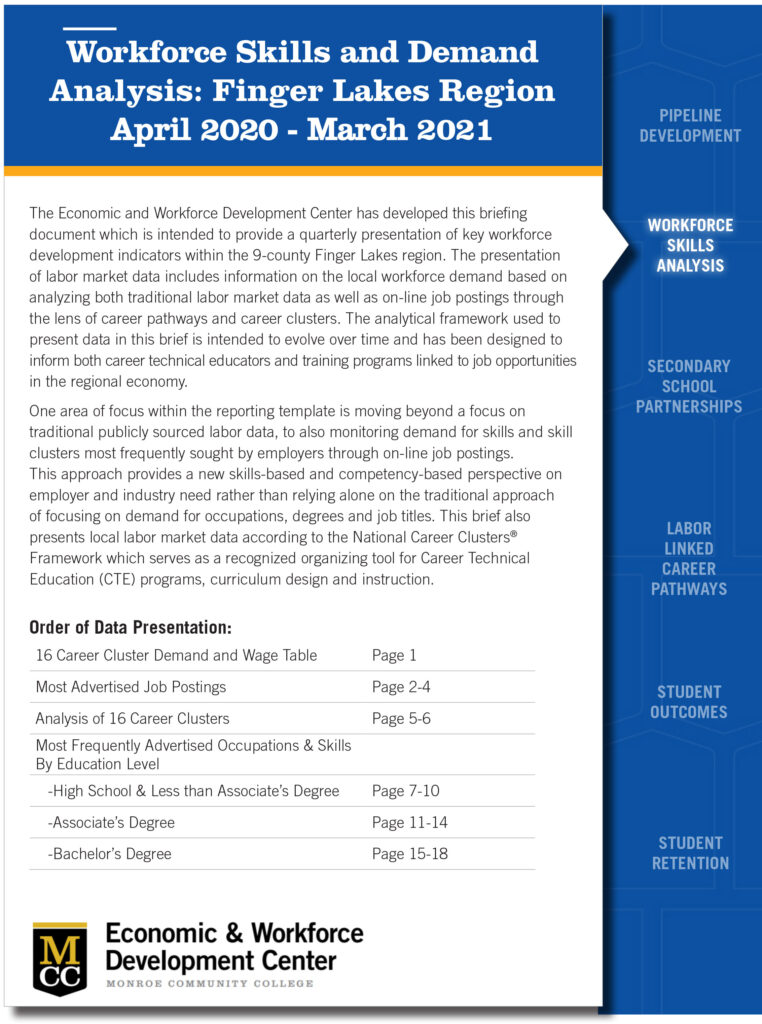
The Economic and Workforce Development Center has developed this briefing document which is intended to provide a quarterly presentation of key workforce development indicators within the 9-county Finger Lakes region. The presentation of labor market data includes information on the local workforce demand based on analyzing both traditional labor market data as well as on-line job postings through the lens of career pathways and career clusters. The analytical framework used to present data in this brief is intended to evolve over time and has been designed to inform both career technical educators and training programs linked to job opportunities in the regional economy.
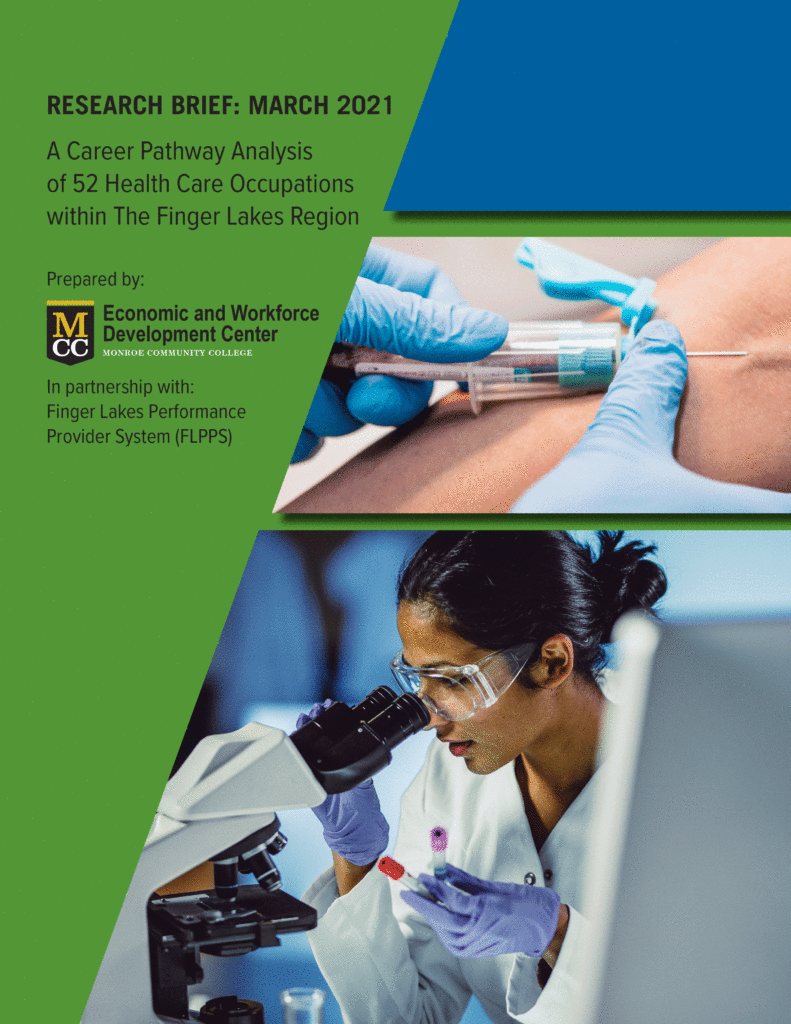
A Career Pathway Analysis of 52 Health Care Occupations within the Finger Lakes Region
RESEARCH BRIEF: MARCH 2021
View PDFThe career pathway presentations in this brief are a continuation of an analysis that was conducted in November 2020 and released as a research brief entitled Findings from an Examination of Government Sourced Labor Data and Online Job Posting Analytics to Inform a Regional Workforce Investment. As with the previous brief, the Finger Lakes Performance Provider System (FLPPS) partnered with the Monroe Community College (MCC) Economic & Workforce Development Center to analyze the staffing pattern within the regional health care industry across the 13-county FLPPS service area of Upstate New York. The purpose of both the previous and current study was to inform an investment by FLPPS that will seek to establish a more functional career pathway system that will provide long term career stability.
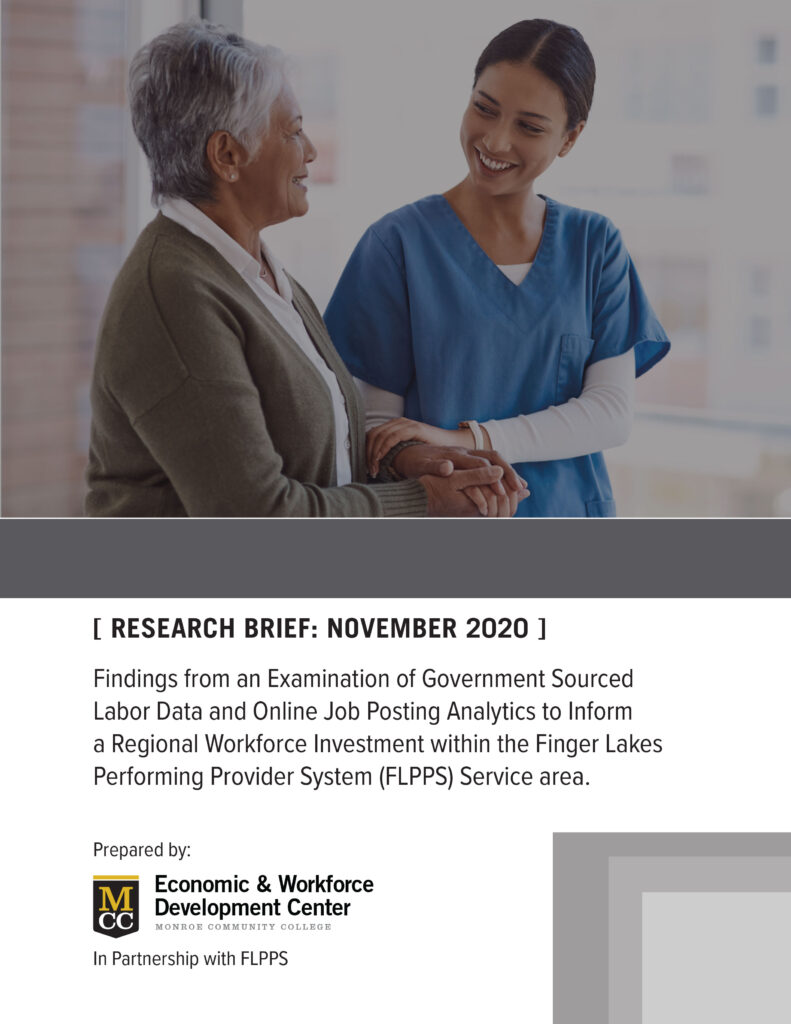
Examination of Government Sourced Labor Data and Online Job Posting Analytics to Inform Workforce Investment
Research Brief: November 2020
View PDFThe Finger Lakes Performing Provider System (FLPPS) data project is intended to inform a regional workforce investment that will create a more functional career pathway system for the healthcare sector across the 13-Counties of the FLPPS service area.
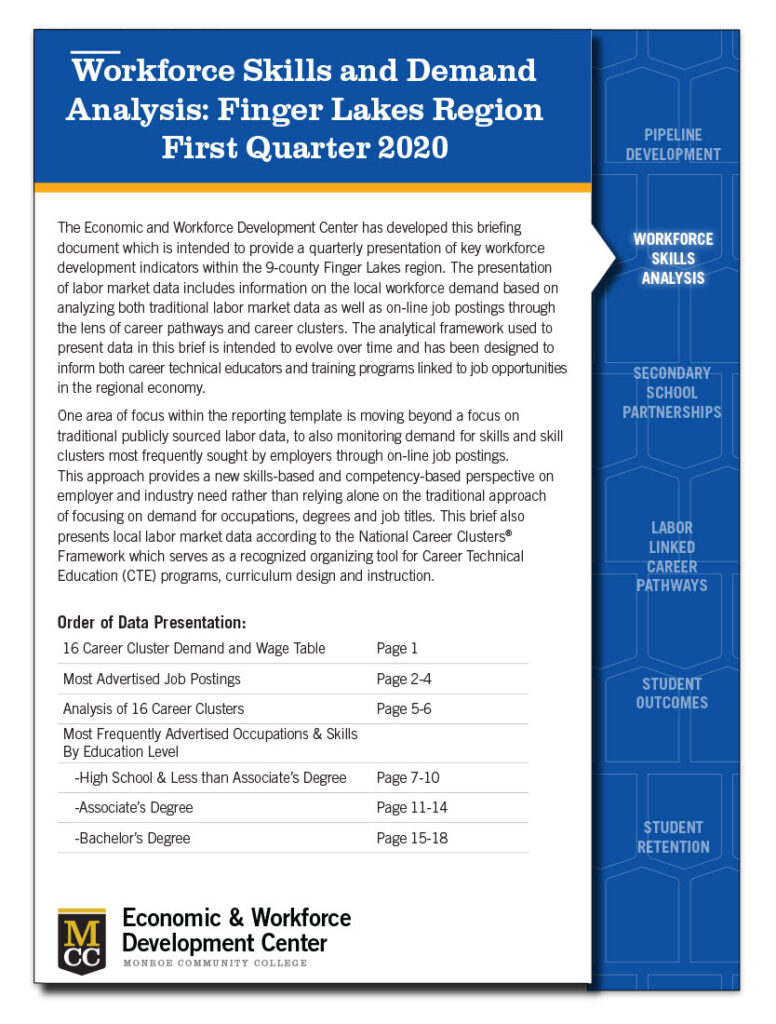
The Economic and Workforce Development Center has developed this briefing document which is intended to provide a quarterly presentation of key workforce development indicators within the 9-county Finger Lakes region. The presentation of labor market data includes information on the local workforce demand based on analyzing both traditional labor market data as well as on-line job postings through the lens of career pathways and career clusters. The analytical framework used to present data in this brief is intended to evolve over time and has been designed to inform both career technical educators and training programs linked to job opportunities in the regional economy.

The pace of change has quickened within business and industry and this requires new ways of thinking about how workforce development is conducted. In alignment with these changes, MCC is investing in new models for workforce and career education. Some of our significant achievements have involved securing major investments for several innovative activities, projects and partnerships focused on strengthening the pipeline of future workers and supporting the upskilling of the incumbent workforce in the Finger Lakes region.

LadderzUP: a Monroe County program powered by MCC
A Strategic Partnership for Regional Workforce Development.
View PDFLadderzUP, a public-public (PuP) partnership between Monroe Community College and Monroe County, New York’s Imagine Monroe, leverages flexible funding from the county to create and implement industry-focused job training and workforce education leading to certifications and other professional credentials. The funding provides an economic incentive for businesses who are in need of trained middle skilled workers, and supports students who might not otherwise be able to afford such training.
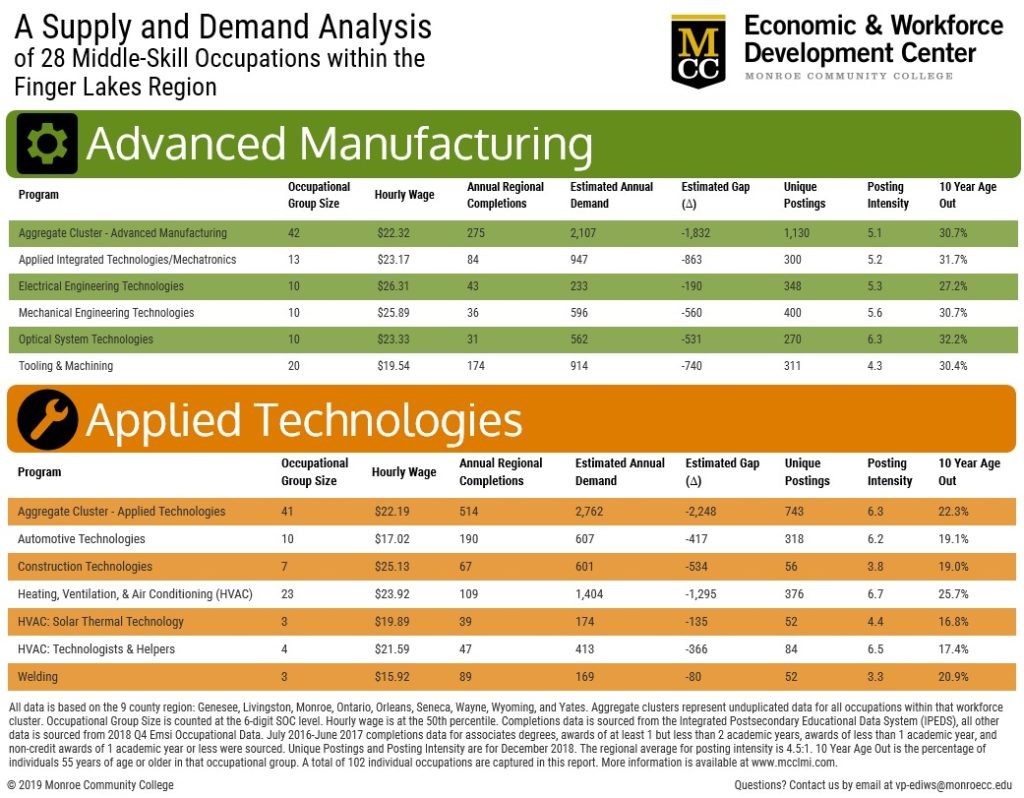
A Supply and Demand Analysis of 28 Middle-Skill Occupations within the Finger Lakes Regions
View FileAn overview of the supply and demand of workers in the Finger Lakes region combining completions data, estimated annual demand, postings data, and age out data.
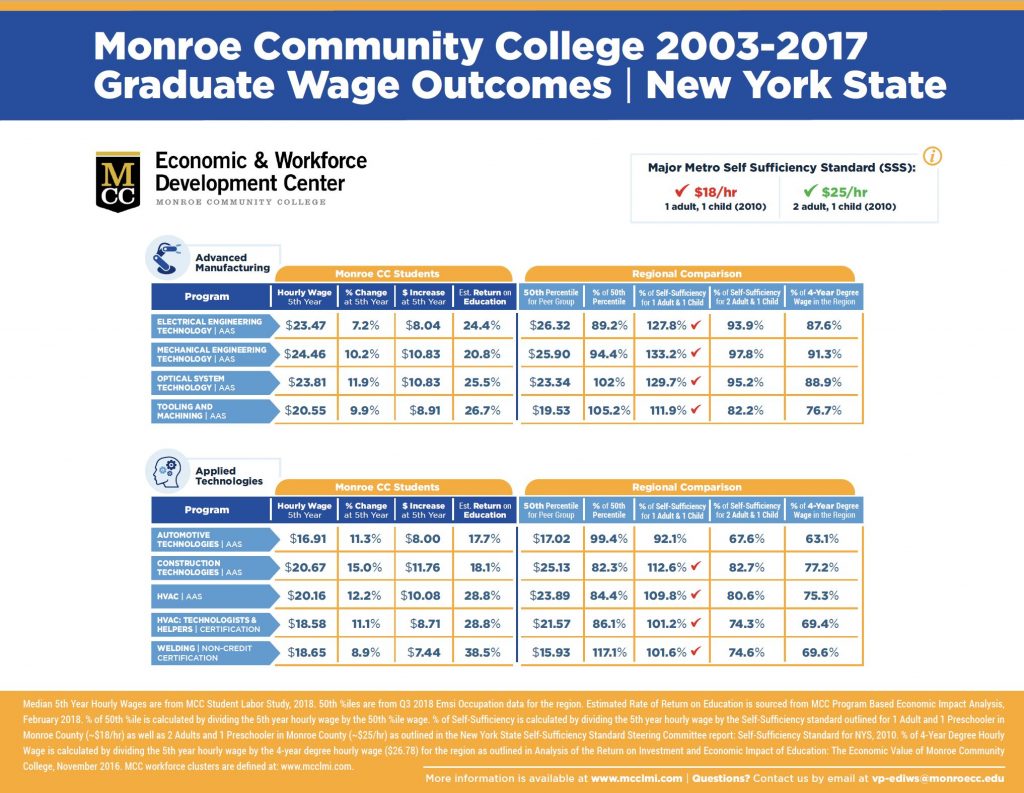
A data dashboard developed from a recent MCC study that examines 15 years of student completion data matched to graduate’s unemployment insurance records. The results of the study provide a basis for better understanding how quickly graduates earnings increase when they obtain employment in an industry aligned to their program of study.

This report assesses the impact of 22 of Monroe Community College’s (MCC) academic programs and one MCC non-credit certificate program on the county economy and the benefits generated by each program for its students. These programs were selected by MCC based on employer’s expressed demand for trained workers in these fields.
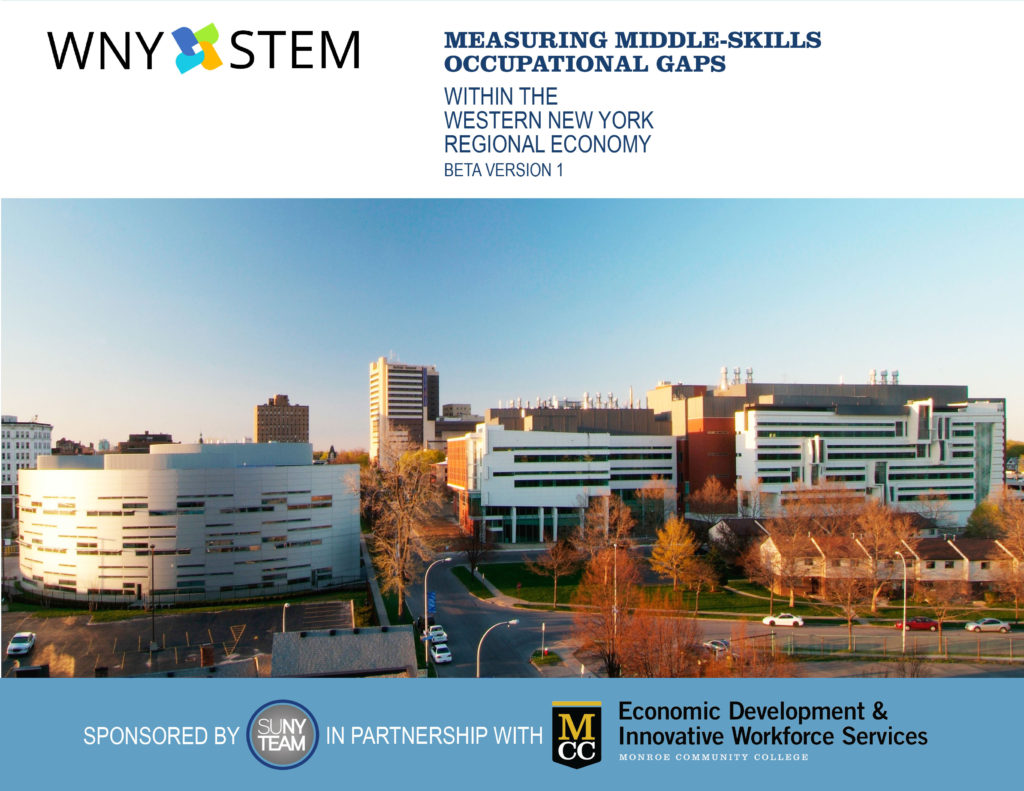
This project was developed in partnership with WNY STEM and funded by the SUNY TEAM (Training and Education in Advanced Manufacturing) Project. This project attempts to quantify and estimate the likely middle-skills gap across the advanced manufacturing workforce cluster within the Western New York economy so that regional training and education providers might better address the gaps and serve the industry.

This project was developed in partnership with the Manufacturers Association of Central New York (MACNY) and funded by the SUNY TEAM (Training and Education in Advanced Manufacturing) Project. This project attempts to quantify and estimate the likely middle-skills gap across the advanced manufacturing workforce cluster within the Central New York economy so that regional training and education providers might better address the gaps and serve the industry.
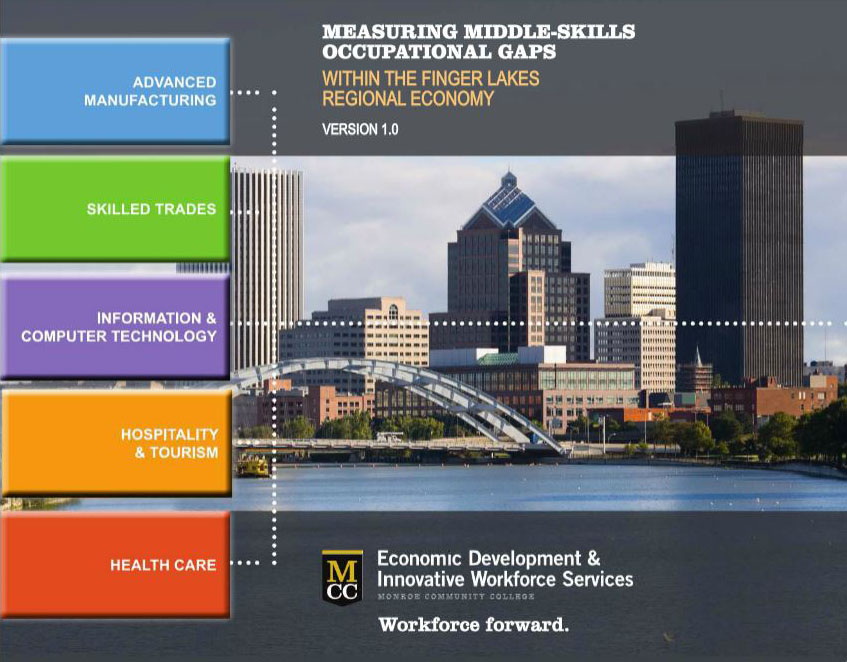
Measuring Middle-Skills Occupational Gaps within the Finger Lakes Regional Economy
January 2015
View PDFThe increased awareness, both locally and nationally, of a growing skills gap within the industries requiring less than a bachelor’s degree encouraged us to embark on this ambitious data project. The goal was to quantify the likely middle-skills gaps across five key workforce clusters in the Finger Lakes region of New York.
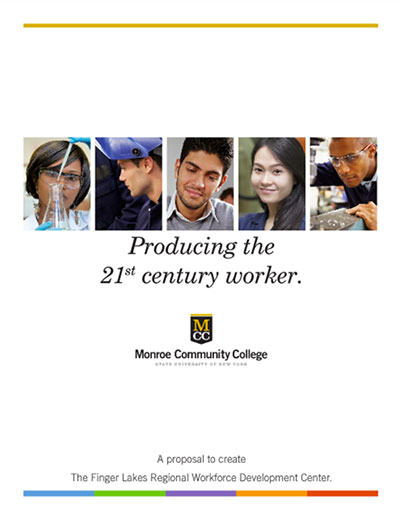
Producing the 21st Century Worker
A Proposal to Create the Finger Lakes Regional Workforce Development Center, 2015
View PDFThe Finger Lakes Regional Workforce Development Center is a dynamic engine that will produce skill-specific workers aligned with the Finger Lakes region’s major technology sectors. While providing a unique learning experience for career-oriented students – many drawn from traditionally overlooked groups – the center will have the flexibility to modify the skills taught to match those most in demand by our area’s key technology clusters: energy, biomaterials, functional films and photonics.
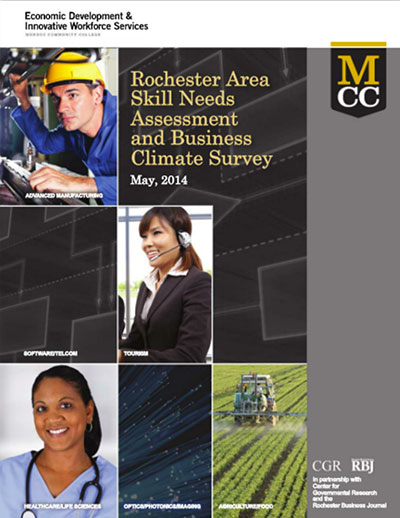
This survey is aimed at generating better area labor market information. The data collected will inform training programs and grant strategies, address local worker pipeline deficits and help put displaced workers back to work. The first administration of the survey was in March of 2013, when Monroe Community College surveyed businesses on the topics of business climate, skill needs and training (initial findings were released in a September 2013 report).
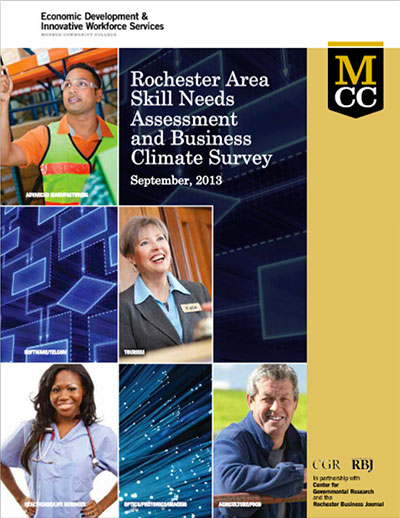
This is the first initiative of MCC’s Economic Development & Innovative Workforce Services division aimed at generating area labor market information. The data collected will inform training programs and help put displaced workers back to work. The survey questions focus on workforce skill needs and the local business climate. The survey was conducted under the leadership of MCC’s division of Economic Development & Innovative Workforce Services, and in partnership with the Center for Governmental Research and the Rochester Business Journal.
Want More?
Feel free to contact us to learn more about our initiatives or how we might assist you in meeting your specific needs.
